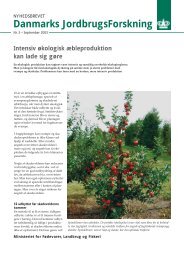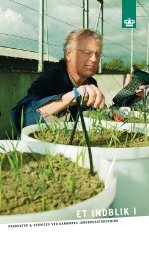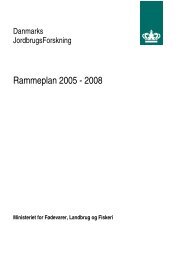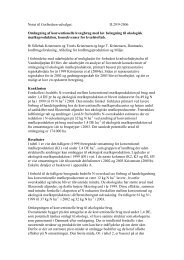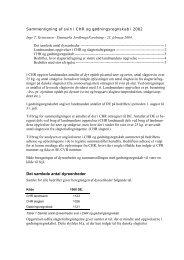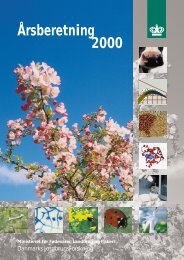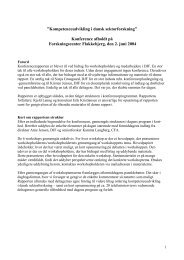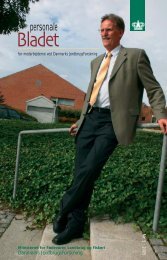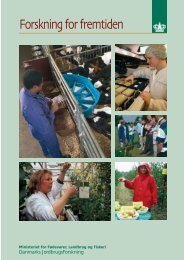Reproduction performances and conditions of group-housed non ...
Reproduction performances and conditions of group-housed non ...
Reproduction performances and conditions of group-housed non ...
Create successful ePaper yourself
Turn your PDF publications into a flip-book with our unique Google optimized e-Paper software.
- Paper III -<br />
Number <strong>of</strong> skin lesions. The number <strong>of</strong> skin lesions at mating were significant lower in<br />
herds with escape possibilities compared to herds without escape possibilities in the mating<br />
unit (13.7 vs. 30.9, n=400 vs. 142, P=0.01). There was no effect (P>0.1) <strong>of</strong> parity <strong>group</strong> <strong>and</strong><br />
no interaction (P>0.1) between +/- escape possibilities <strong>and</strong> parity <strong>group</strong> for number <strong>of</strong> le-<br />
sions at mating.<br />
There was a significant interaction between parity <strong>group</strong> <strong>and</strong> escape possibility in the pregnancy<br />
unit for number <strong>of</strong> skin lesions three weeks after mating (P0.1) was found on aggressions<br />
three weeks after mating <strong>and</strong> no parity <strong>group</strong> x escape interaction (P>0.1). There<br />
was no effect <strong>of</strong> parity <strong>group</strong> on % in box at weaning (P>0.1).<br />
Lying behaviour. As shown in Table 9, parity <strong>group</strong> affected the probability <strong>of</strong> lying solitary<br />
at weaning (p=0.04) in that, the probability <strong>of</strong> lying solitary was higher for sows older<br />
than third parity compared to younger sows. There was no effect <strong>of</strong> +/- escape possibilities<br />
(P=0.6) on lying solitary at weaning <strong>and</strong> no effect <strong>of</strong> parity <strong>group</strong> (P=0.3), +/- escape possibilities<br />
(P=0.6) or interaction (P=0.4) for lying solitary three weeks after mating.<br />
Fear tests. In the HA-test test, first litter sows were more likely to be tested fearful compared<br />
to the other parity <strong>group</strong>s (P=0.03) as shown in Table 9. No main effect <strong>of</strong> parity<br />
<strong>group</strong> (P= 0.3, 0.4), +/- escape possibilities (P=0.5, 0.4) or interaction between parity <strong>group</strong><br />
<strong>and</strong> +/- escape possibilities (P=0.3, 0.8) were found for the FHA-test or the FHT-test, respectively.<br />
4. Discussion<br />
With a few exceptions as mentioned in 2.3, the indicators were possible to perform in<br />
commercial sow herds at the planned stages at weaning, mating, three weeks after mating<br />
<strong>and</strong>/or at the following farrowing.<br />
77




